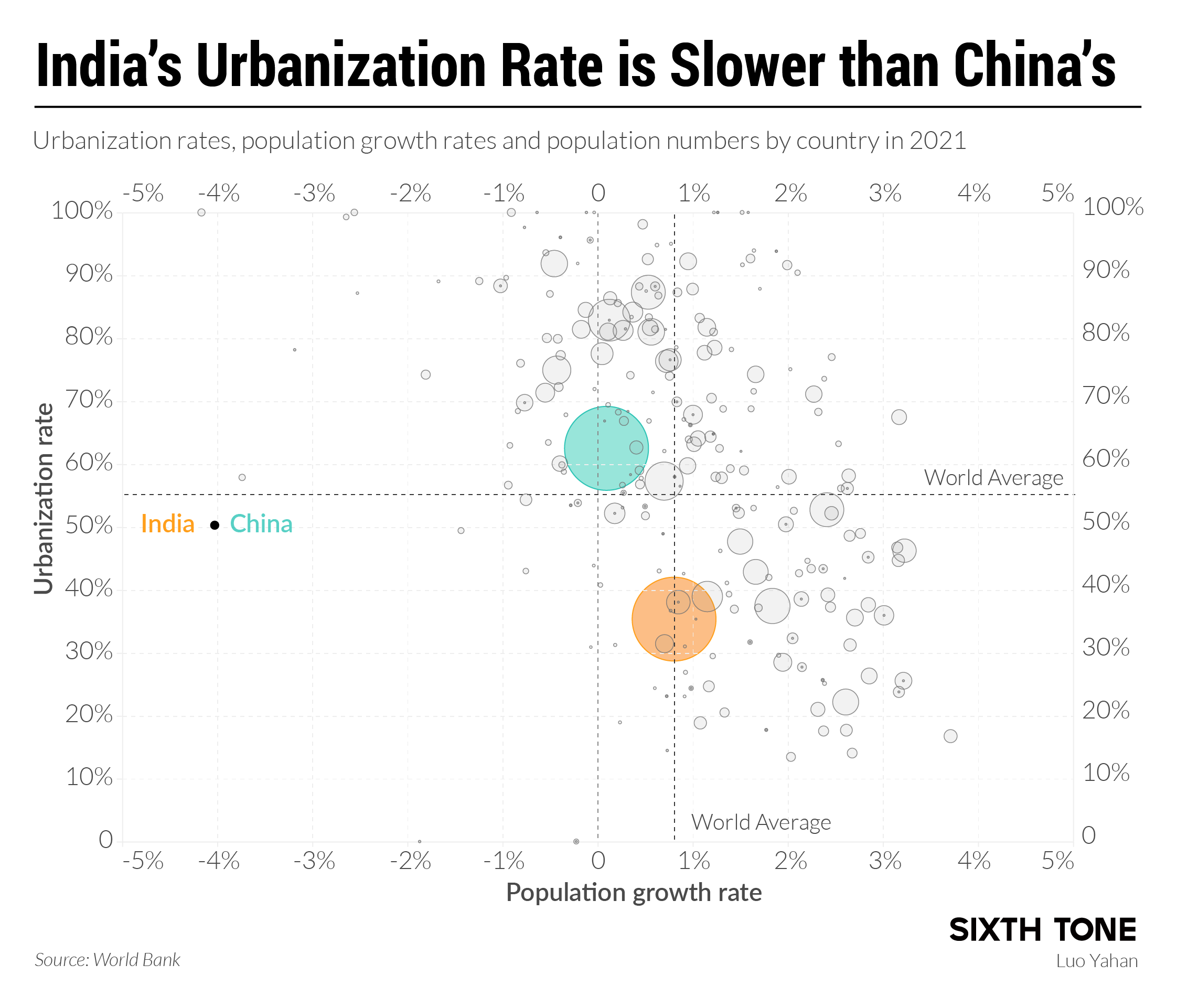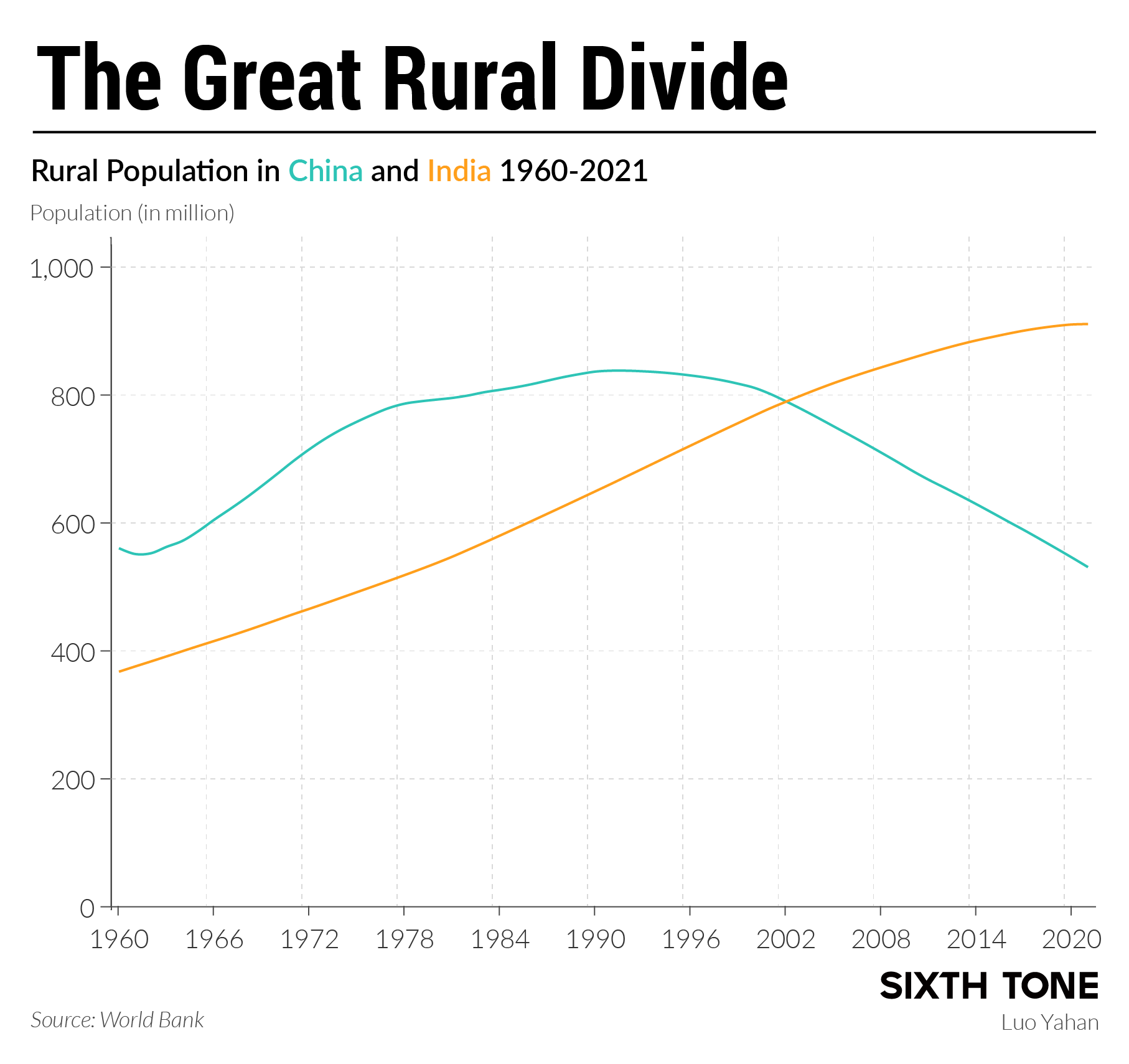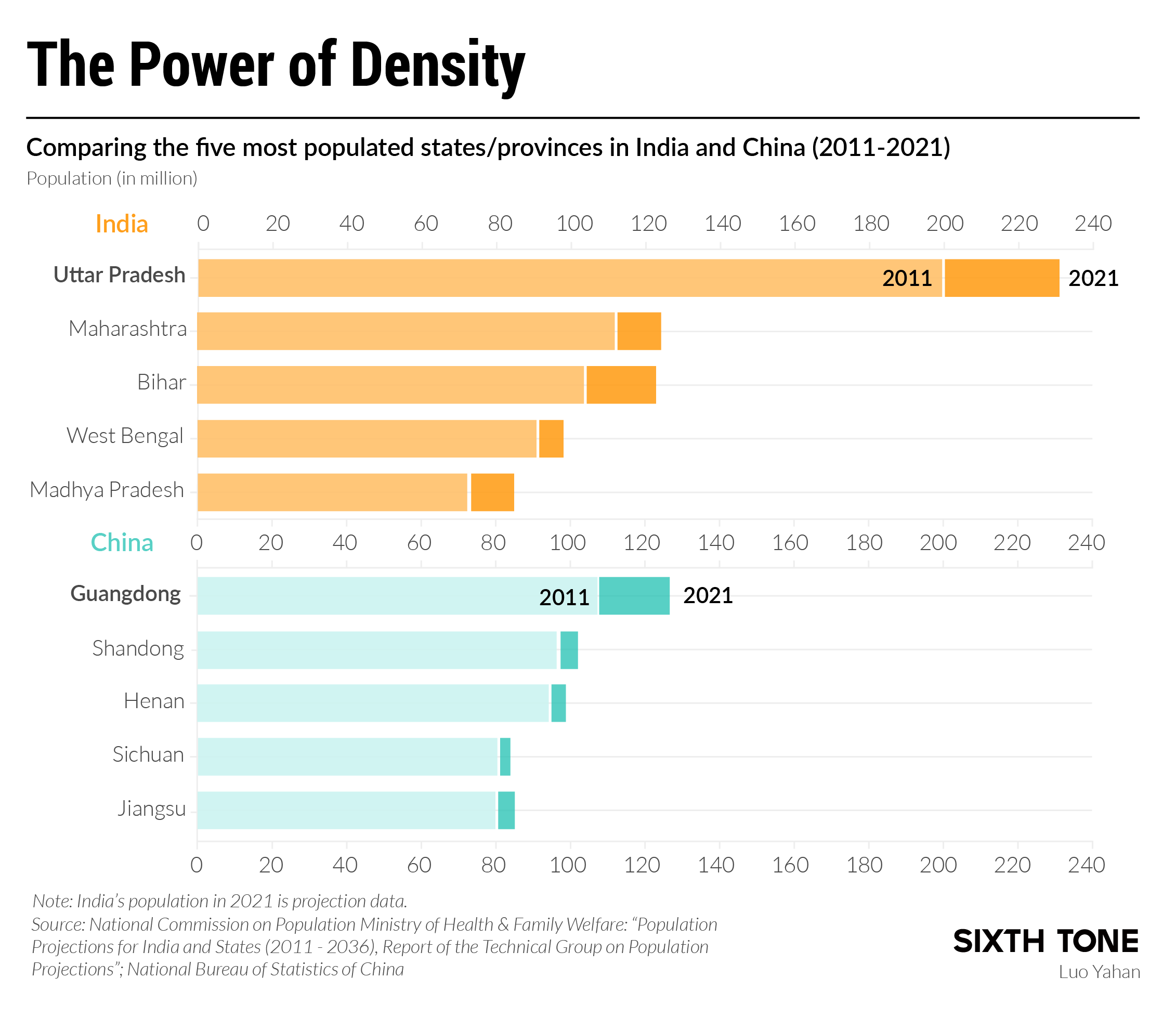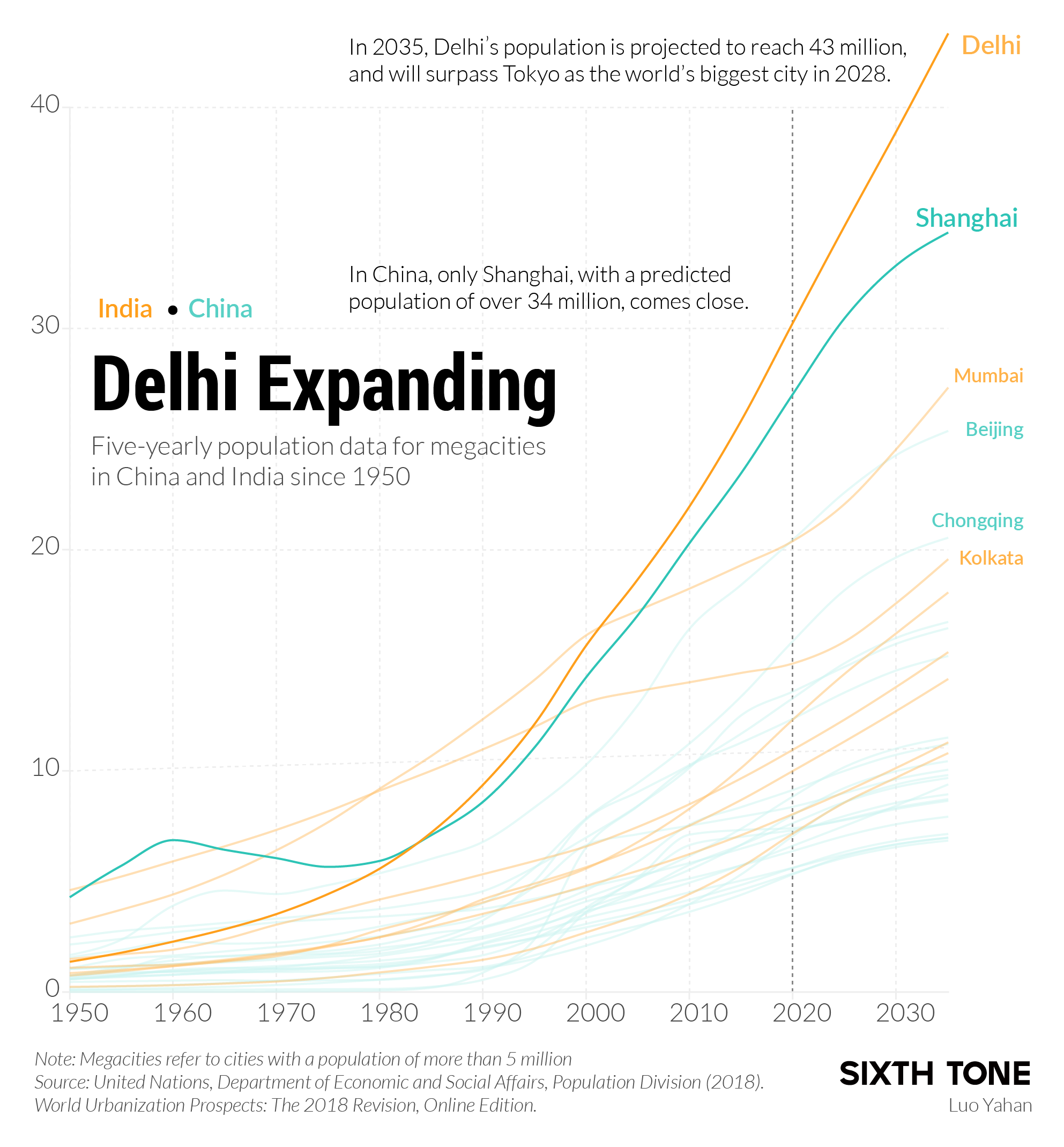
A Tale of Two Giants: How India’s and China’s Demographics Differ
India will soon become the world’s most populous nation, ending the long-held title that China has had since the 1950s, when the United Nations started maintaining population records.
By mid-2023, India’s population is expected to reach 1.4286 billion, inching past China’s 1.4257 billion, according to a United Nations Population Fund (UNFPA) report released in April. This significant demographic shift stems from differences in fertility rates, demographic structures, and population distribution.
Projections indicate that India’s population is expected to continue expanding and reach a peak of almost 1.7 billion in 2063, while China’s population will continue to decline. This marks a significant contrast between the two countries, particularly since China’s population shrunk for the first time in six decades in 2022, following a record-high population of slightly over 1.4 billion in 2021.
Additionally, India has a much younger population than China. While the median age in China in 2023 is around 39, India’s is just above 28. And in 2021, the percentage of the population below the age of 14 years in India was 26%, compared with 18% in China. The percentage of people above the age of 65 in India and China stood at 7% and 13%, respectively, in 2021.
Apart from the well-known variations in fertility rates and demographic structures, Sixth Tone found further differences between the two countries, particularly in terms of population distribution and urbanization.
To illustrate these differences, Sixth Tone analyzed the contrasting patterns of population distribution and urbanization in China and India.

Despite the common perception that population growth and urbanization are directly correlated with a country’s level of development, data shows that India proves to be an exception. Compared to China and the world average, the rate of urbanization in India seems far slower.

India’s rural population has grown steadily since 1960, although the growth rate has slowed in recent years. In contrast, China’s rural population grew rapidly until the 1970s. It slowed in the 1980s during the period of reform and opening-up with the introduction of the “one-child” policy. Around 2000, China’s rural population began to decline rapidly.

India’s population is more concentrated in some states compared with China. In 2011, Uttar Pradesh, India’s most populous state, had 200 million inhabitants, while Guangdong, China’s most populous province, had about 110 million — almost half that of Uttar Pradesh.

Additionally, data from the five most populous states and provinces in both countries shows that India saw a significant increase in population in all its states.
Since 1980, Delhi’s population has been skyrocketing, making it a megacity of tremendous proportions. Projections indicate that by 2028, Delhi’s population will exceed 37 million, surpassing Tokyo to become the world’s largest city. In China, Shanghai, which has almost four times the area of Delhi, comes closest in terms of population.
Editor: Apurva.
(Header image: VCG, reedited by Sixth Tone)










